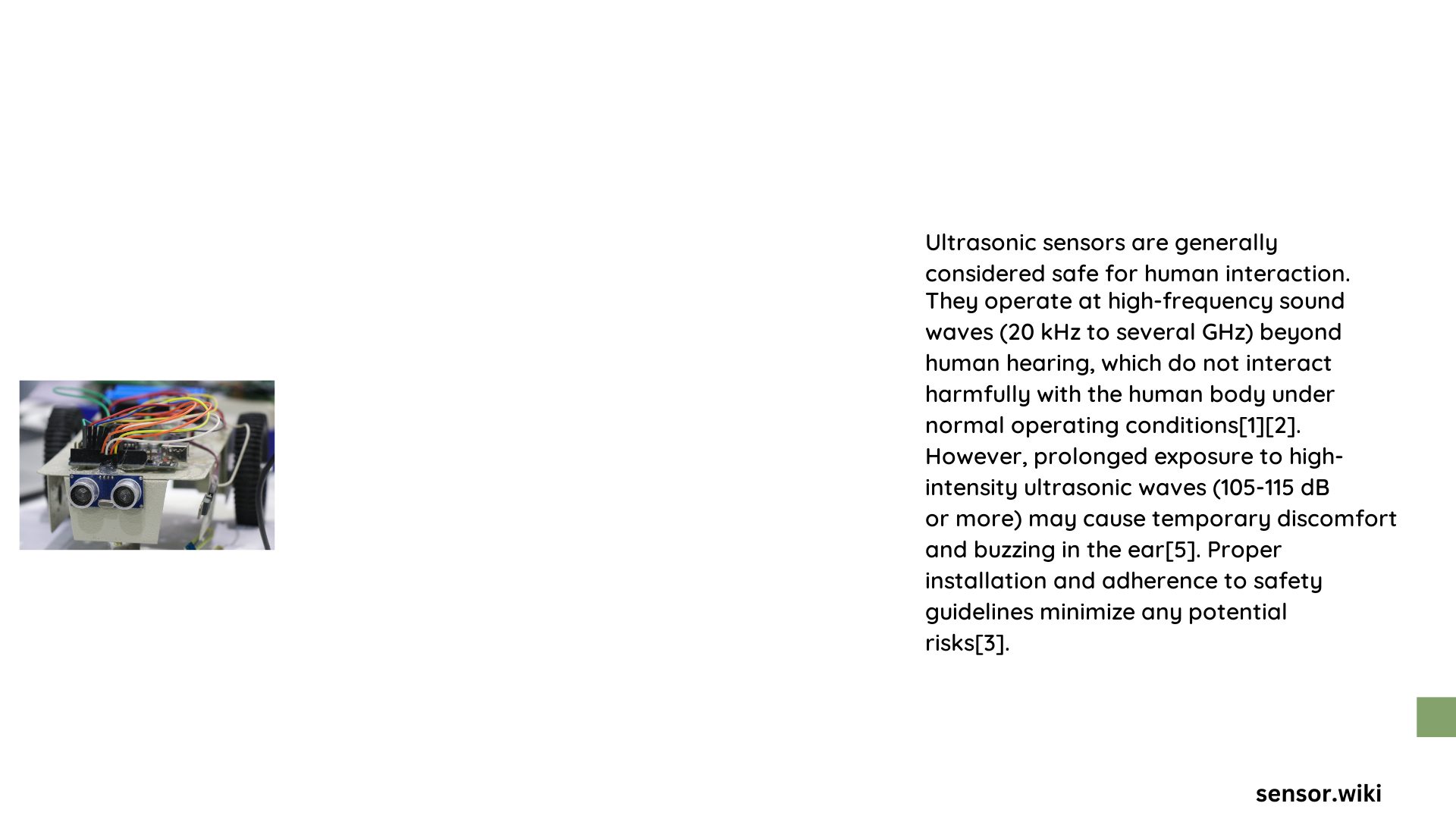Ultrasonic sensors are widely used in various technological applications, from automotive parking systems to industrial machinery. Concerns about their potential health impacts have led to extensive scientific research and safety evaluations. This comprehensive analysis explores the safety of ultrasonic sensors, examining their frequency ranges, exposure risks, and scientific evidence to definitively answer whether these sensors pose any harm to human health.
What Are Ultrasonic Sensors?
Ultrasonic sensors are electronic devices that use high-frequency sound waves to detect objects, measure distances, and gather environmental information. These sensors operate beyond the range of human hearing, typically between 20 kHz and several GHz.
Key Characteristics of Ultrasonic Sensors
- Frequency range: 20 kHz – several GHz
- Used in multiple industries
- Non-invasive detection method
Are Ultrasonic Sensors Dangerous to Human Health?

Scientific Evidence of Safety
| Aspect | Findings | Safety Level |
|---|---|---|
| Frequency Range | Beyond human hearing | Low Risk |
| Radiation Type | Sound waves, not electromagnetic | No Harmful Radiation |
| Biological Interaction | No proven tissue damage | Safe for Humans |
Detailed Safety Analysis
- Frequency Considerations
- Ultrasonic sensors operate at frequencies significantly higher than human hearing
- Sound waves dissipate quickly with distance
-
Minimal potential for tissue interaction
-
Regulatory Compliance
- Strict international safety standards govern sensor design
- ISO 17386 and ISO 22840 regulate sensor performance
- Mandatory safety certifications for industrial and consumer applications
Exposure Risk Assessment
Researchers have conducted extensive studies to evaluate potential health risks associated with ultrasonic sensor exposure. Key findings include:
- No Long-Term Health Risks: Comprehensive medical research shows no significant adverse health effects
- Minimal Energy Transmission: Sound waves lack sufficient energy to cause cellular damage
- Distance Mitigates Potential Risks: Sensor intensity decreases exponentially with distance
Practical Safety Considerations
Industrial and Consumer Applications
Ultrasonic sensors are prevalent in various environments:
– Automotive parking assistance
– Industrial machinery
– Medical imaging equipment
– Security and proximity detection systems
Recommended Safety Practices
- Maintain recommended operational distances
- Follow manufacturer guidelines
- Use sensors from certified manufacturers
- Regular equipment maintenance
Expert Perspectives on Sensor Safety
Professional organizations and scientific bodies consistently confirm the safety of ultrasonic sensors. The consensus is clear: when used as intended, these sensors do not pose significant health risks to humans.
Comparative Risk Analysis
Ultrasonic sensors present substantially lower risks compared to:
– X-ray imaging
– Microwave radiation
– High-intensity electromagnetic fields
Conclusion
The scientific evidence overwhelmingly suggests that ultrasonic sensors are safe for human interaction. Rigorous testing, international safety standards, and extensive research confirm their minimal health risks.
Reference:
– World Health Organization – Non-Ionizing Radiation Studies
– International Electrotechnical Commission – Sensor Safety Standards
– Occupational Safety and Health Administration – Technology Safety Guidelines
